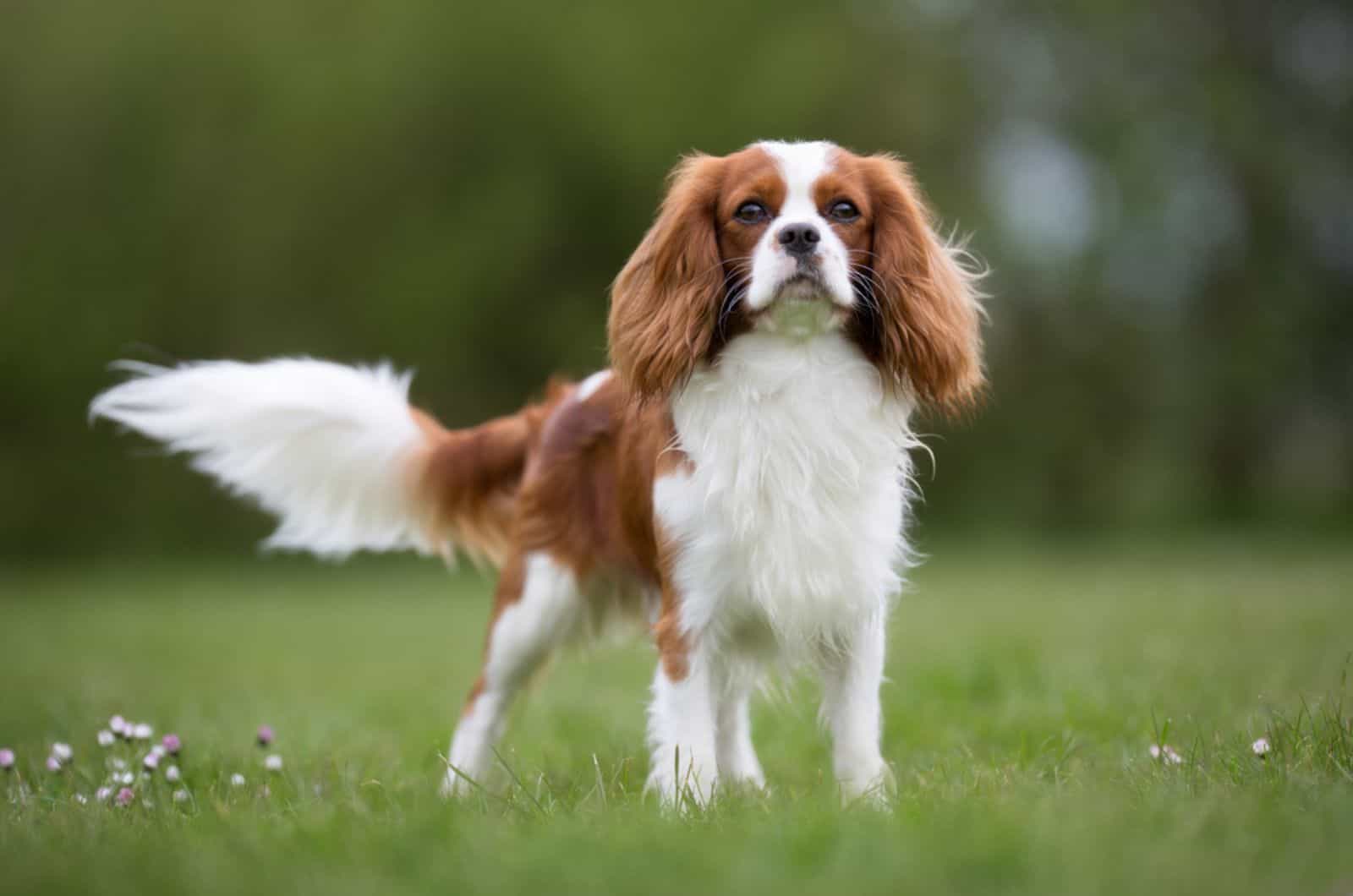The Cavalier King Charles Spaniel is a royal, small dog breed with an average weight of 13 to 18 pounds. In height, they generally don’t exceed 13 inches.
This puppy is one of the most favorable pet dogs in the world, considering its charming nature, and high trainability.
But the true question is: ‘‘How fast do they grow?’’
To answer this, you may want to look into the Cavalier King Charles Spaniel growth chart! We designed the ultimate growth chart that will help you estimate the growth of your puppy in every stage of life.
In order to understand the growth chart better, we divided it into two basic categories – weight chart and height chart! We will try to identify the basic growth stages of the Cavalier King Charles Spaniel’s life as well.
Additionally, we will see what things impact the overall growth of this royal canine! Now, let’s see how the Cavalier King Charles Spaniel makes its way to adulthood!
The Cavalier King Charles Spaniel Growth Chart
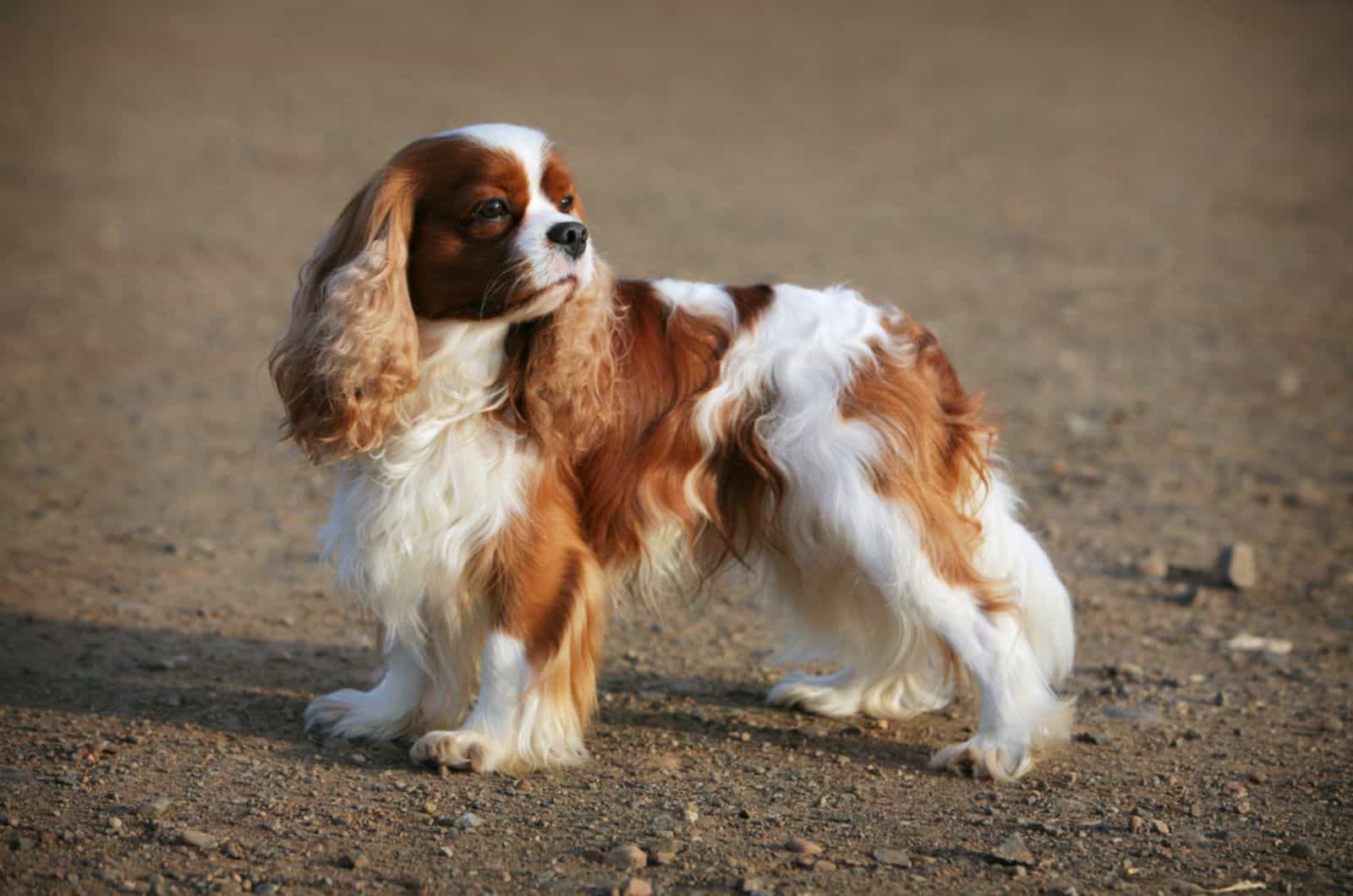
This canine is known to be an English dog that loves being an indoor pet. Are you a fan of Cavalier King Charles Spaniel colors? Great! This fashionista puppy will perfectly fit into your loving home.
This beautiful canine, however, shares a lot of traits with Cocker Spaniels, which means the puppy won’t have a problem being engaged in sporting activities, too!
The growth of Cavalier puppies requires supervision and daily monitoring. This especially refers to the early puppyhood, when puppies are still fragile and sensitive.
The important thing is not to take them away from the litter too soon, as they develop basic socialization skills with their littermates. Also, breastfeeding is key during the puppyhood stage!
In order to fully understand the Cavalier King Charles growth, we need to see how big Cavaliers get at each stage of life. Let’s take a tour through this puppy’s estimated weights!
Cavalier King Charles Spaniel Weight Chart By Age
[table id=644 /]
As we can see from the above weight chart, Cavalier King Charles Spaniel puppies’ growth goes slowly during the first two months. This is the time a Cavalier owner should pay attention to a puppy’s early development, as some Cavaliers need extra food supplements to develop properly.
This especially goes for underdeveloped puppies. However, healthy Cavaliers have their own pace and breastfeeding will probably suffice. Now, let’s see what the Cavalier’s height chart looks like!
Cavalier King Charles Spaniel Height Chart By Age
[table id=645 /]
You will notice that the height chart has a gradual rise during the first six months. However, after the first six months, Cavaliers grow slowly and their height changes insignificantly.
When they are 10 months of age, Cavaliers practically stop growing as they are already 12 to 13 inches tall.
However, what we have just seen does not always apply to all puppies from this breed. Some of them develop slowly, so don’t despair.
Both weight and height charts have standard deviation calculated.
Cavalier King Charles Growth Stages
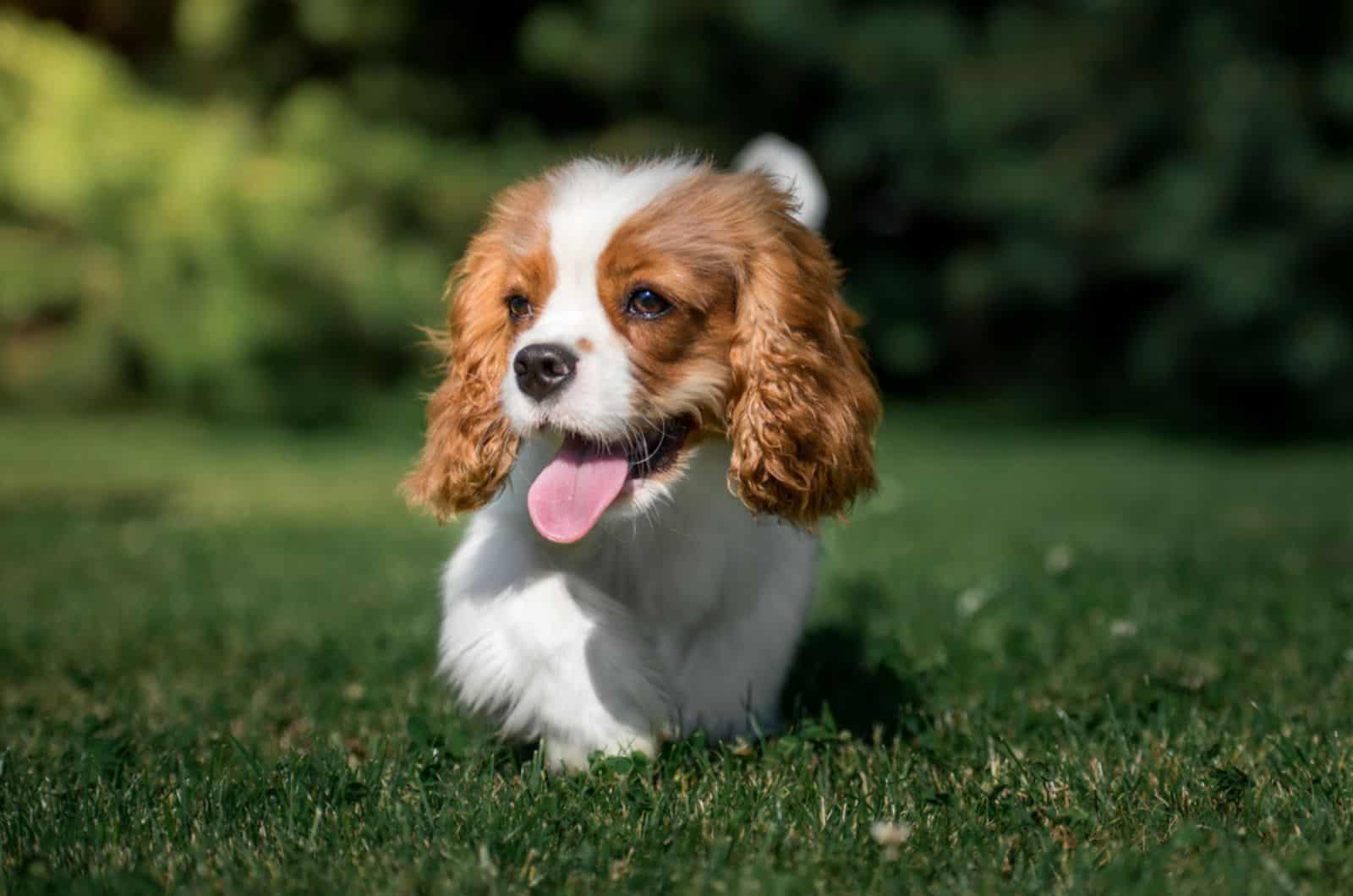
The Cavalier King Charles Spaniel growth chart has to be broken down into several categories in order to understand how these puppies grow. Both the dog weight and height highly depend on genetics, but there are also some external factors that could impact the overall growth.
There are some Cavalier King Charles Spaniel’s mixes that share a lot when it comes to growth charts. This is especially factual for breeds that have over 75% Cavalier genes.
However, the growth curve of Cavalier puppies goes up slowly, and each phase has an equal impact in the overall development. These puppies are generally a small-size, but there might be times the Cavalier exceeds its estimated growth in a certain phase of life.
We will now try to explain each of these phases individually. The division of Cavalier growth phases is based on age, behavioral characteristics these puppies develop during each phase, feeding habits, and lifestyle.
If your Cavalier puppy is overweight, or underweight in a specific life stage, there has to be an explanation for that! We will try to identify the ideal weight and height of your puppy in each of these six phases.
However, bear in mind that each puppy has its own individual path, and its own starting position. Due to certain reasons, such as genetics, health issues, or feeding habits, your puppy might go up or down by a few pounds/inches. This doesn’t have to be as scary as it may initially sound.
The important thing is to always consult your vet about the growth, and to monitor your pet’s development regularly.
Now, let’s try to identify key points from each stage in order to understand the full meaning of these charts.
1. Puppyhood
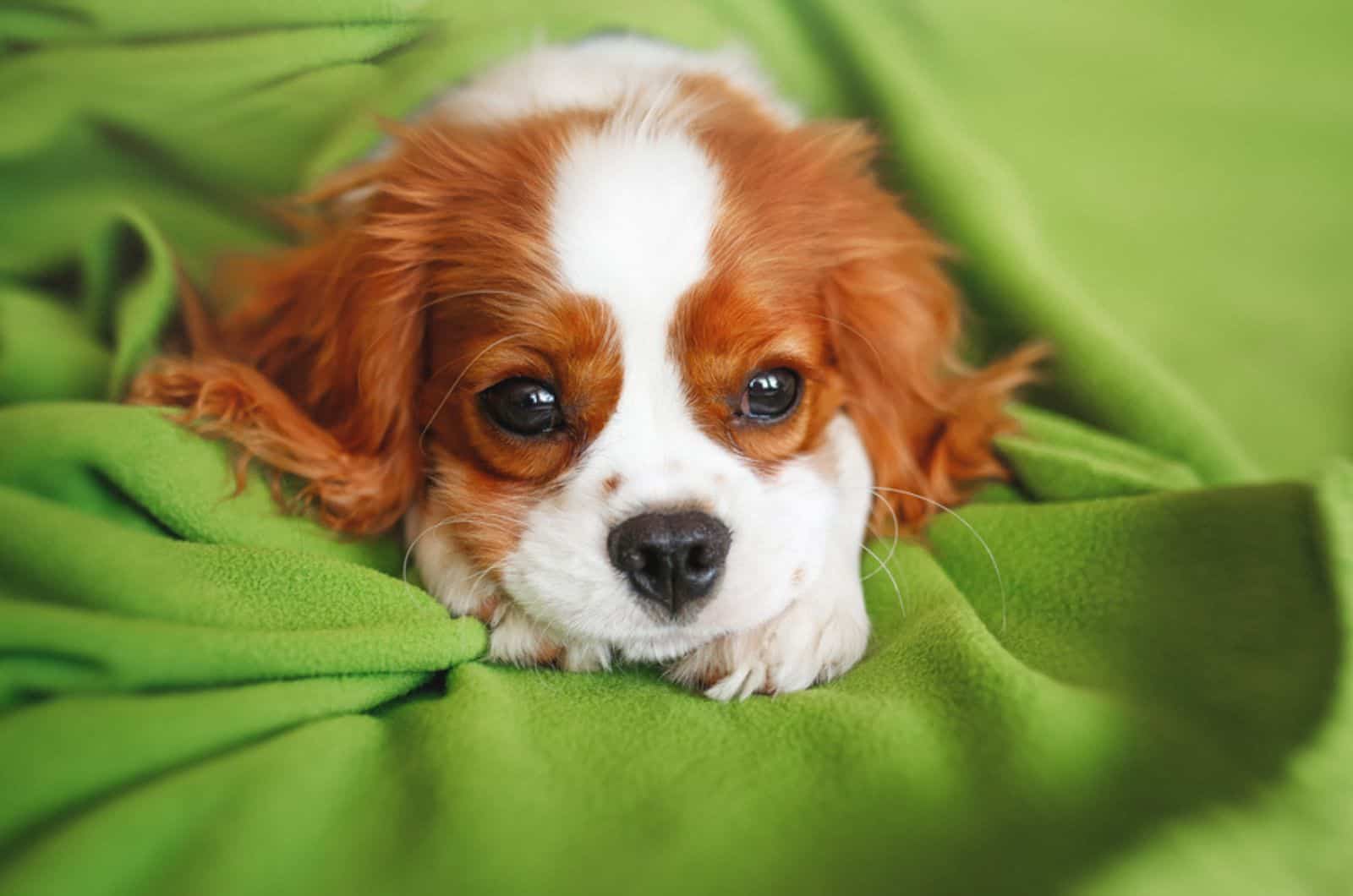
Reputable Cavalier King Charles Spaniel breeders will tell you that the puppyhood stage is probably the most sensitive stage of this puppy’s life.
This toy breed requires special attention during the first eight weeks of their lives. According to the puppy weight calculator, these canines reach up to 4-5 inches in height and weigh around 4 to 5 pounds by the end of week 8.
Dog food is based around their mom’s milk. However, underdeveloped puppies require additional supplements. The advice is to always consult a vet about the puppy food.
This is the period puppies make their first big movements in life. Of course, we refer to crawling. Other than that, puppies start seeing in this stage of life, too!
Being next to littermates is key as this is the way to maintain a normal body temperature and to learn basic puppy skills. That’s why quality breeders won’t sell you a puppy below 7-8 weeks of age.
The first eight weeks is the period puppies learn basic socialization techniques. This is the great period for early obedience training, too. Cavalier puppies are a pretty intelligent dog breed, and several weeks old pups can be potty trained easily.
During early puppyhood, make sure to always provide a calm and warm environment for your puppies. But, if you decide to purchase a Cavalier, make sure you pick the most reputable ones.
2. Late Puppyhood
Late puppyhood is the phase between early puppyhood and the juvenile phase. This is a period of transition when both female and male dogs learn how to act around other dogs, people, or other pets.
Smaller dogs, such as Cavaliers, require extra attention as their size is still pretty small and their body physique is vulnerable. Healthy dogs will start learning social skills from being around their owners, but they need daily training in order to be fully socialized.
The best way to socialize your puppy is by implementing positive reinforcement techniques. This is the period they start eating puppy food, so healthy snacks could be an ideal way to mentally stimulate them!
The size chart of puppies between 8 weeks of age and the sixth month revolves around 5 to 12 inches in height, and 5 to 13-14 pounds in weight. This is still the beginning of a Cavalier King Charles Spaniels’ lifespan, so bear in mind that puppies need a lot of work!
Puppies still need frequent and timely meals during the late puppyhood stage. The best way to train them is in between meals. If you want to train your Cavalier puppies’ agility, make sure their stomach is not full and that there is at least 2 hours between a meal and training.
In this phase of life, puppies need moderate exercise. Both male and female dogs have a long way before they are fully developed, so make sure you don’t overwhelm your pets with excessive activities.
3. The Juvenile Age
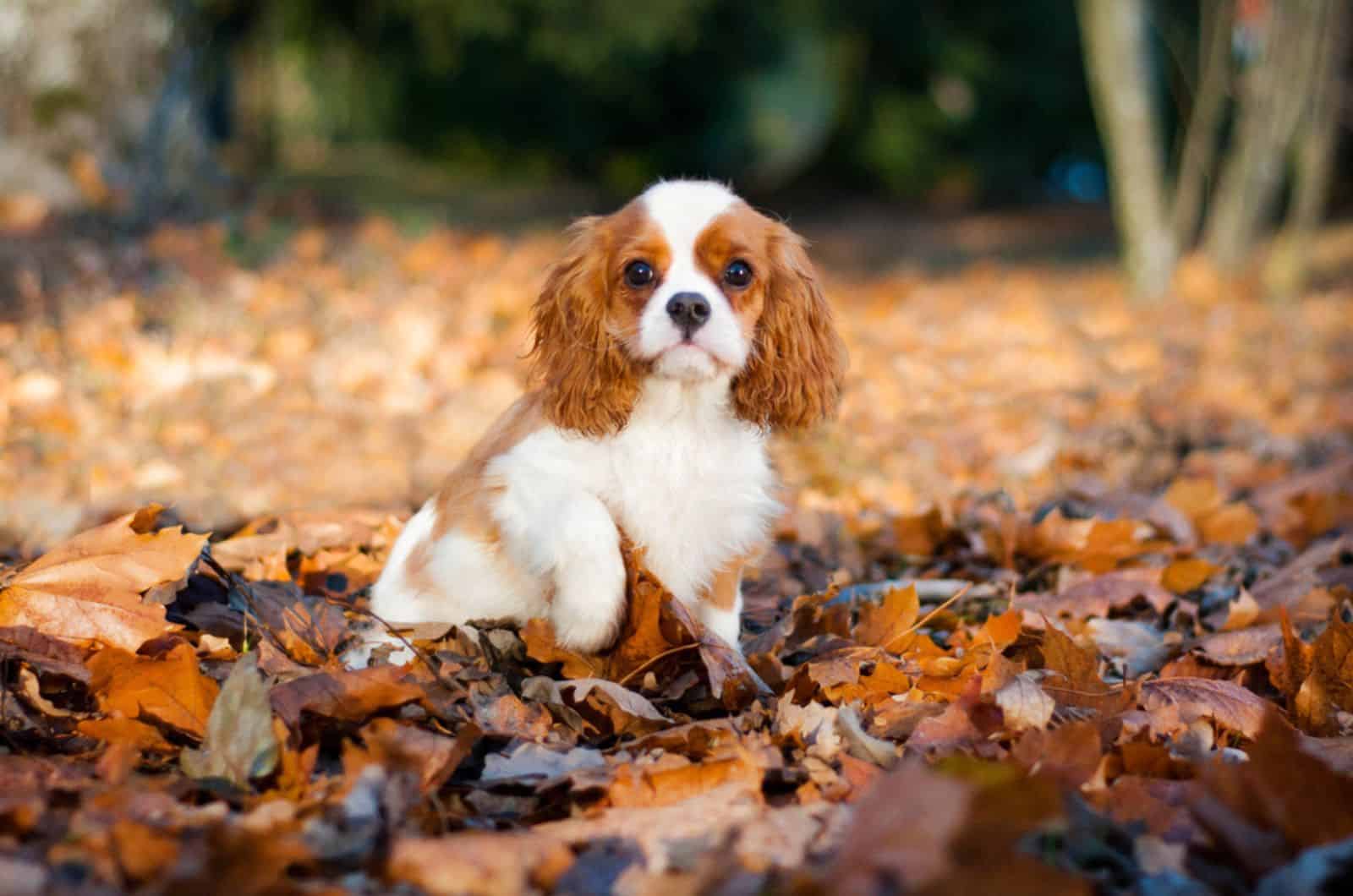
The juvenile phase is the first step towards adulthood. According to normal dog growth patterns, in this phase, Cavalier puppies are mature enough to reach the sexual maturity phase.
If you are planning to spay or neuter your pet, the best way to do this is prior to sexual maturity. Spaying or neutering is highly recommended to all pet owners, though. Puppies will be happier and healthier, and you won’t encounter unpredicted dog behavior.
If you’re a first time dog owner and you’re wondering why is your dog acting weird all of a sudden, the answer might just be the fact that it reached the sexual maturity phase.
The juvenile phase begins at six months of age. But when does it end? Dog experts are divided on this. A number of them claim that the juvenile phase ends by the age of 16 months. Others claim that adulthood begins a little bit earlier, at 12 months of age.
The Cavalier King Charles Spaniel grows gradually, step by step. However, some canines have a natural, fast-growing tendency. The adult height is reached before the end of the first year, which is amazing.
Their standard size, though, depends on a number of determinants and doesn’t always meet the breed standards.
These lap dogs become 11-14 inches tall during the juvenile phase. However, their weight starts at 4 pounds, but ends at 17 pounds, which is a pretty big transition.
4. Almost A Grown Up
Even though the Cavalier puppy may reach adult weight before adulthood, they are probably still mentally immature.
This phase represents the transition into adult size. One thing that is missed is mental maturity.
However, female Cavaliers may reach the maturity phase faster than males. This means females can become adults even before 16 months of age.
If the current age of your puppy is between 12 and 16 months, this means the puppy is almost a grown up. You should start taking care of your puppy’s feeding chart rigidly, as Cavaliers are known for their tendency to get overweight.
Avoid the worst dog food brands on the market and establish a well-organized feeding chart. Small breeds, such as Cavalier, Lhasa Apso, Maltese, or Pugs require a well-prepared meal plan as they are not as active as larger dog breeds, such as German Shepherds, and they tend to be real couch-potatoes.
During this phase of life, Cavaliers will probably stop growing and will need fewer meals, and healthy nutrition.
Puppies between a year and year and a half old will develop fully grown hair, and long, floppy ears. Even though the coat is medium long, it doesn’t require as frequent grooming as other dog breeds with similar coats do. A weekly brush and occasional bath will be enough.
However, bear in mind that puppies of this age already have long, strong nails. Cavaliers need frequent nail clipping as long nails can be painful and cause structural problems in these puppies.
5. Adulthood
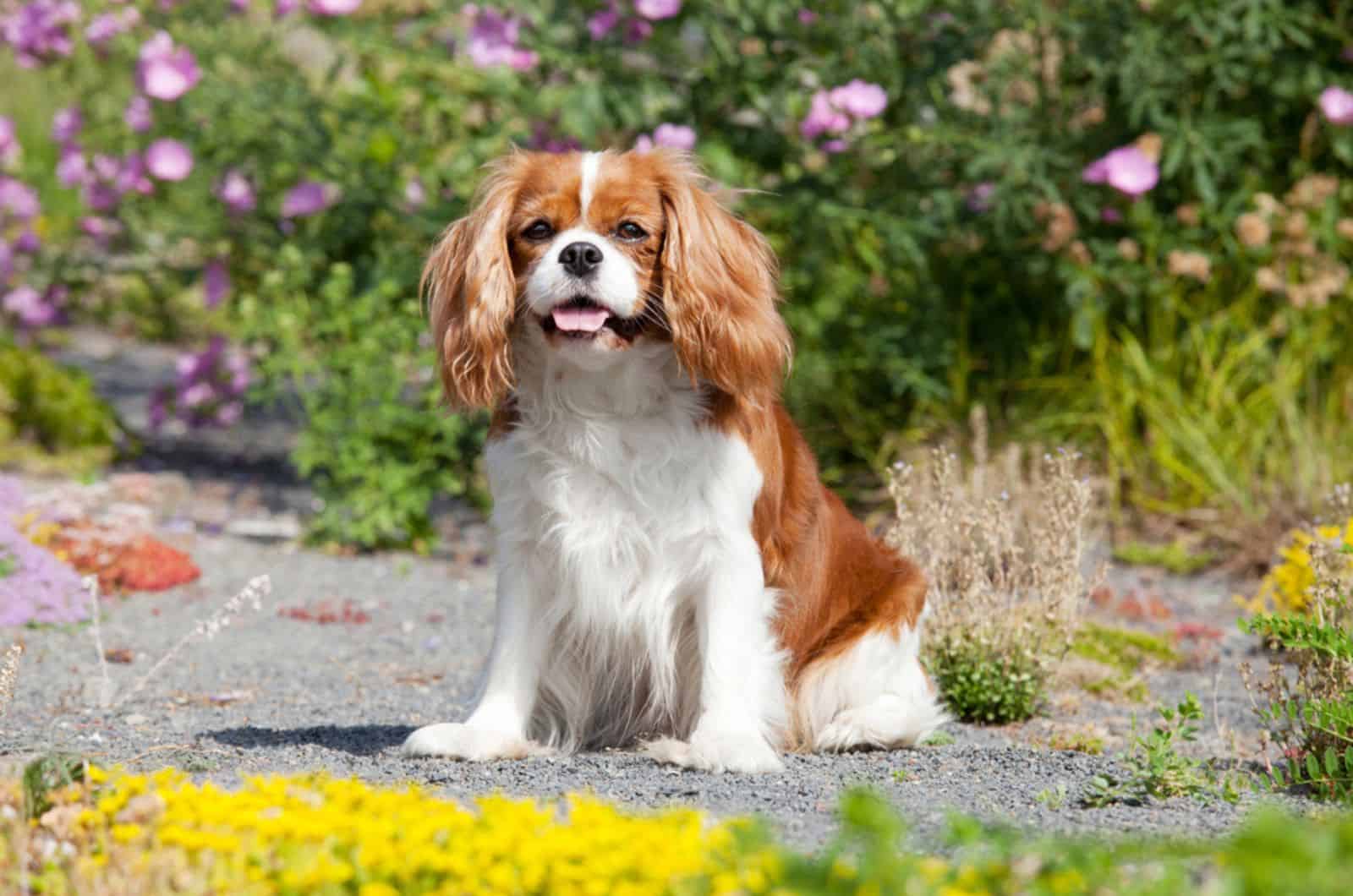
After the first sixteen months, Cavalier puppies reach their full maturity. This phase is known as adulthood.
These AKC registered canines’ healthy weight is 13 to 18 pounds. They reach up to 12-13 inches in height.
This is just the prediction based on the majority of Cavalier dogs. However, the weight of the Cavalier King Charles is always an individual matter, which means that the human factor makes a difference!
Obese Cavaliers tend to be inactive, and they can develop severe health conditions, such as diabetes, or heart problems. If you want your Cavalier puppy to be healthy and not to develop any severe health problems, make sure it doesn’t get obese!
The Cavalier King Charles Spaniel growth chart depends on many external factors. Further below we will see what they are!
Adult puppies require moderate activity. This is a playful and active dog breed by default. However, Cavalier puppies can also become lazy couch potatoes, too.
Good behavior depends on the owner, as the breed is adaptable. Cavaliers are great show dogs and they are popular as contestants in many dog competitions.
Cavalier King Charles Spaniel puppies have excellent communication with their owners, and solid interaction skills. They are family-related and affectionate. In a way, they resemble English Toy Spaniels.
Adult puppies require weekly grooming and a bath. The best smelling dog shampoos for all coat types is something that you might want to try.
6. Senior
Life expectancy is a debatable term for many dog breeds. However, this is not the case with Cavalier puppies. This is because they easily reach up to 15 years of age.
This is a pretty good average, considering that there are breeds that live much shorter lives.
However, the Cavalier King Charles Spaniel growth chart is a sensitive topic once puppies enter their late years.
Regular vet exams are a must, as well as health tests.
These canines have a tendency to develop severe health issues, such as patellar luxation, cardiac diseases, or syringomyelia and chiari-like malformation.
Furthermore, senior puppies tend to have a calmer life compared to adult or juvenile Cavalier King Charles Spaniel puppies.
You should pay attention to their feeding chart more than you should make them exercise. Their bone structure is not as strong as in younger dogs, and the risk of getting hurt is higher.
Senior puppies are true lap dogs, as they enjoy spending time in their owners’ company. They love lying around the house, as well as spending most of their day indoors.
The sexual drive in senior puppies is smaller. On the other hand, seniors might eat just as much as adults, which is not good if your dog is not as active as it needs to be. Pay extra attention to your senior’s feeding chart, as these canines require healthier meals divided into smaller portions.
How To Impact The Growth Chart Positively
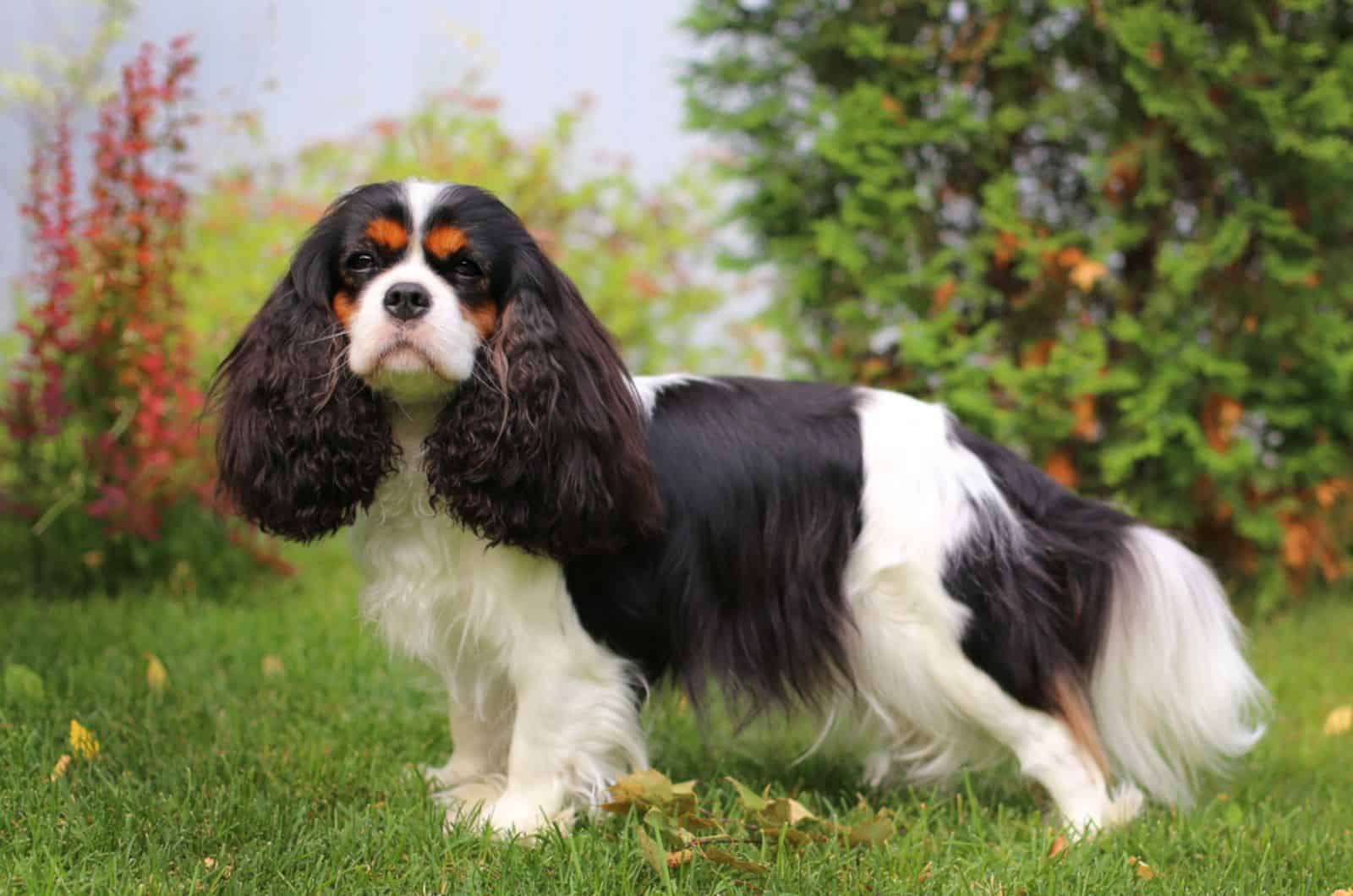
This cute, royal puppy that goes by adorable dog names is a small breed and it needs extra attention. Even though the Cavalier King Charles Spaniel is not one of the healthiest dog breeds in the world, this dog is generally healthy and doesn’t demand high-maintenance.
Still, the Cavalier King Charles Spaniel growth chart can always be impacted positively.
We listed several things that you can look into in order to improve your puppy’s growth: nutrition, exercise, socialization, and vet visits. We find them crucial for the overall well-being of your dog, but also for the puppy’s proper growth.
1. Nutrition
Nutrition is the first thing on the list in the Cavalier King Charles Spaniel growth chart’s table of contents. This is a small puppy that requires healthy nutrition.
The well-established feeding chart is key to the overall well-being of your Cavalier King Charles Spaniel. Feeding has a huge role in the Cavalier King Charles Spaniel growth chart, as it helps your puppy grow properly.
During the puppyhood stage, the dog gets needed nutrients through breastfeeding. However, the puppy needs your assistance during the latter stages of life. This includes healthy foods, timely meals, and healthy snacks, too.
Grain-free, balanced diet is an excellent choice! The puppy also needs the proper representation of protein and healthy fats.
Avoid unprocessed carbs, though! Moderately active puppies cannot burn that much energy, and the side-effect of eating too many carbs is obesity, as well as mental imbalance.
Dog food for Cavapoos is something you may want to try out, as these two breeds share similar food preferences.
2. Exercise
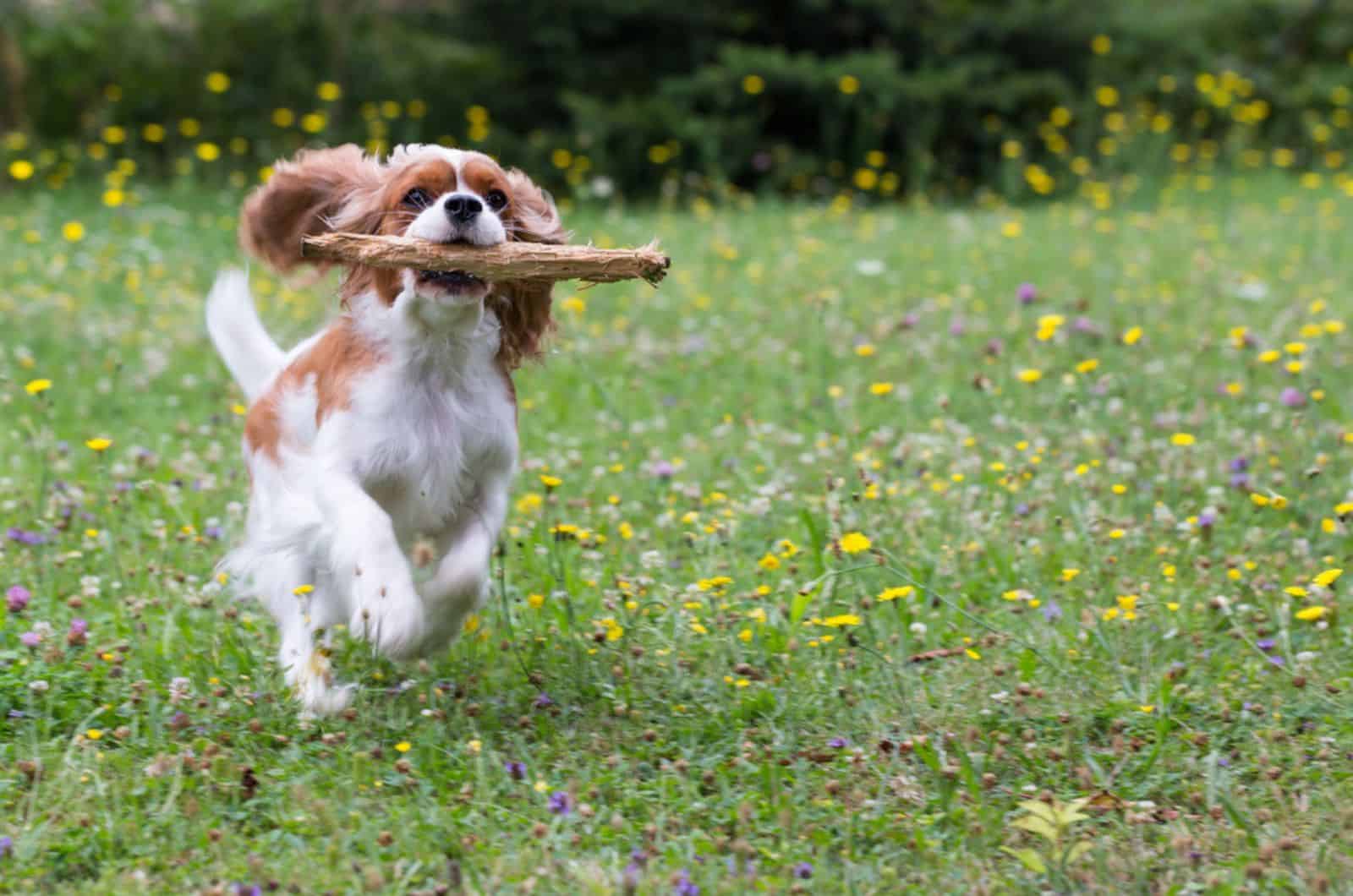
Highly active Cavalier puppies are generally more healthy and happy, as their serotonin levels are higher.
Exercise can help your puppy grow up happily, and develop mental stability. This is crucial for the mental development of your puppies.
Your puppy doesn’t demand excessive or overwhelming training.
Ball fetching, or a simple walk in a park will be enough for the energy burnout of your puppies.
However, if you’re planning to exercise with your Cavalier in the backyard, make sure it is fenced! Cavaliers are known for their curious nature and they can easily wander away if they find something interesting.
Dog training collars are a good option during the training process of your Cavalier King Charles Spaniel.
3. Socialization
These small dogs are generally social and have great family skills. However, not all Cavalier King Charles Spaniel puppies are socialized by default.
Early socialization is the best choice, if you’re planning to have a Cavalier in your home. You can start implementing socialization techniques after the first eight weeks of your puppy’s life. Socialization helps your puppy develop into a healthy, confident dog.
‘‘How to socialize an aggressive dog’’ is not gonna be one of your concerns if you’re planning to have a Cavalier puppy as a pet.
High level of socialization positively correlates with a dog’s ability to perform both physically and mentally. Socialized puppies feel more comfortable expressing themselves, and they show mental superiority.
Even though socialization is not a direct factor in your puppy’s growth, it creates a positive impact on the Cavalier King Charles Spaniel growth chart. Make sure you always use positive reinforcement during the puppy’s education process. Puppies respond reciprocally.
If you invest time in your puppy, you will get a well-behaved, socialized dog in return.
4. Vet Visits
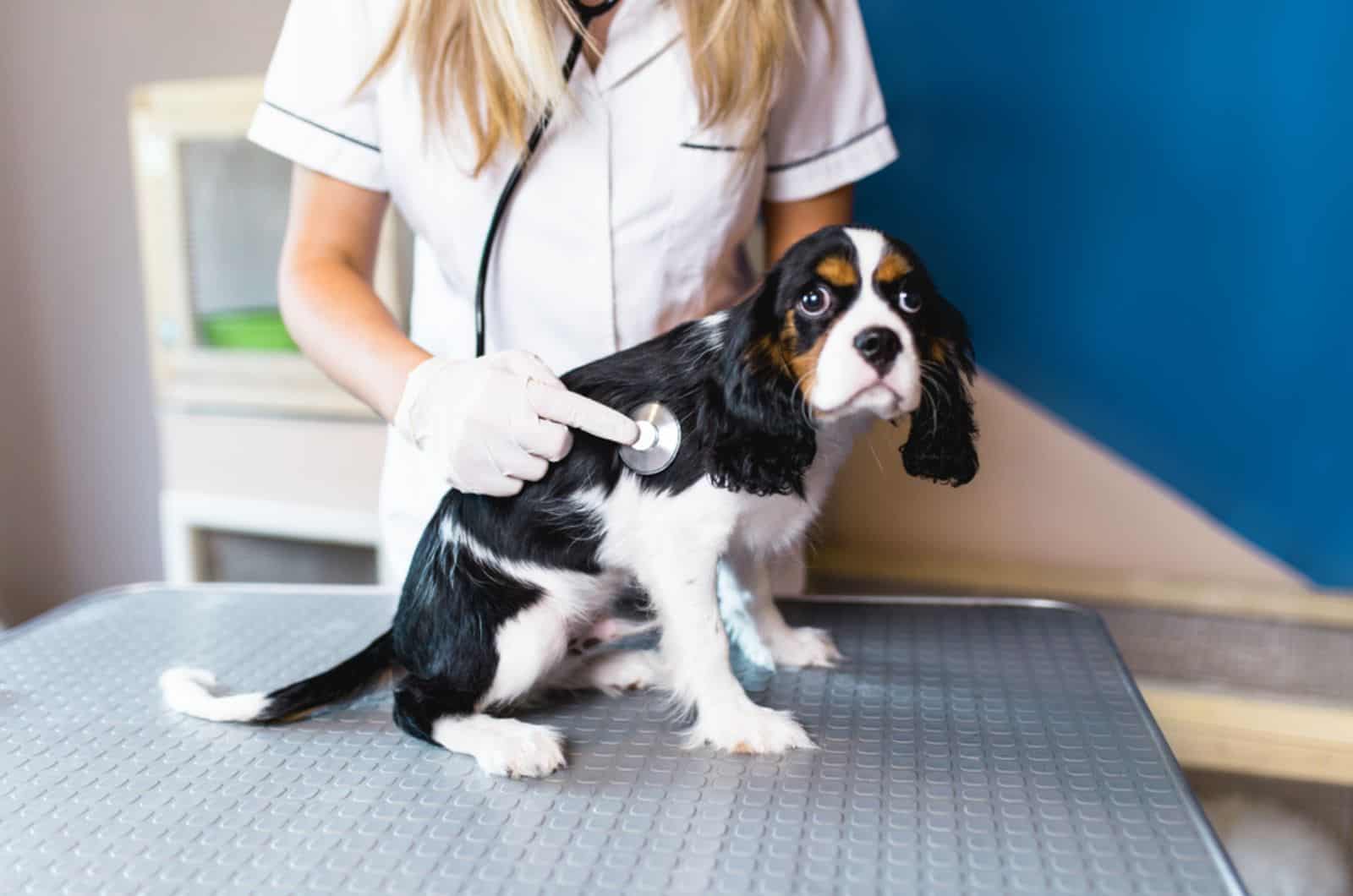
Regular vet visits can help you detect health problems and act on them quickly. Cavalier King Charles Spaniel puppies are generally healthy, but they might face some major health problems, such as hip dysplasia, patellar luxation, or heart diseases.
Diseases such as hip dysplasia are hereditary, and all you can do is to subject your puppy to vet treatments. However, there are some health conditions that develop over time, such as heart diseases, or diabetes.
Even though some dogs are more prone to heart problems, or diabetes, keeping them healthy is on you!
The Cavalier King Charles Spaniel growth chart is a sensitive topic. Your puppy needs attention and daily monitoring.
Its feeding chart also needs careful consideration. Obese puppies are more prone to diabetes and heart disease.
Also, if you notice your dog is pooping clear liquid, it means you’re doing something wrong and the feeding chart needs to be reorganized.
FAQs
1. What Weight Should A Cavalier King Charles Be?
These canines are relatively small, as they don’t go beyond 18 pounds. This is usually the case with all Cavalier puppies.
However, there are Toy Cavalier puppies that qualify among the smallest dog breeds in the world. They make a separate case.
The Cavalier King Charles Spaniel growth chartrequires long hours of organizing, planning, and preparing. However, once you succeed, the rest is a piece of cake!
Their weight might go up or down by a few pounds, but excessive weight gain, or weight loss is a sign of a serious condition.
Overweight puppies are considered to be obese. Obesity harms their overall well-being and makes them susceptible to diabetes, or bone injuries.
On the other hand, excessive weight loss is a sign of a serious health condition in a Cavalier dog.
2. How Big Should A Cavalier Be At 6 Months?
This small, fluffy dog breed is unique. Usually, 10.5-14 pounds is normal for this life stage.
Their height reaches up to 12 inches. If we take into consideration the overall Cavalier King Charles Spaniel growth chart, we will see that puppies are several pounds/inches away from their adult size.
However, puppies at six months of age still have a pretty long way to go, as they are still mentally immature and have just entered the juvenile phase of their lives.
If your Cavalier is a few pounds lighter, or heavier at six months of age – that is not alarming. Each Cavalier puppy has its own, individual pace.
However, if your puppy is significantly underweight, or overweight, then this is a cause for an immediate vet visit.
To Sum Up
The Cavalier King Charles growth chart is something you need in order to properly organize the every-day life of your pet.
It helps you determine what the ideal weight of your puppy should look like, or whether you are doing something wrong.
The growth chart is divided into two categories – the weight chart and the height chart. This division helps you have a better representation of data. Additionally, we divided the growth of Cavalier puppies into stages.
Each stage of Cavalier’s life is equally important. The puppyhood stage is as important as the juvenile stage, as both carry some natural processes that are important to your puppy’ life.
This is a unique dog. A lot of dog owners in the U:S. favor this breed for their affection and cuteness. However, their growth needs to be carefully monitored, as this small breed is sensitive, and requires proper petting.
Read more:
